The analysis shows that conventional and nuclear carriers both have been effective in fulfilling countries’ presence, crisis response, and war-fighting requirements and share many characteristics and capabilities. Conventionally and nuclear-powered carriers both have the same standard air wing and train to the same mission requirements. Each type of carrier offers certain advantages, for example, conventionally powered carriers spend less time in extended maintenance, and as a result, they can provide more forward presence coverage; by the same token, nuclear carriers can store larger quantities of aviation fuel and munitions and, as a result, are less dependent upon at-sea replenishment. There was little difference in the operational effectiveness of nuclear and conventional carriers in the Persian Gulf War. Let’s check conventional systems first:
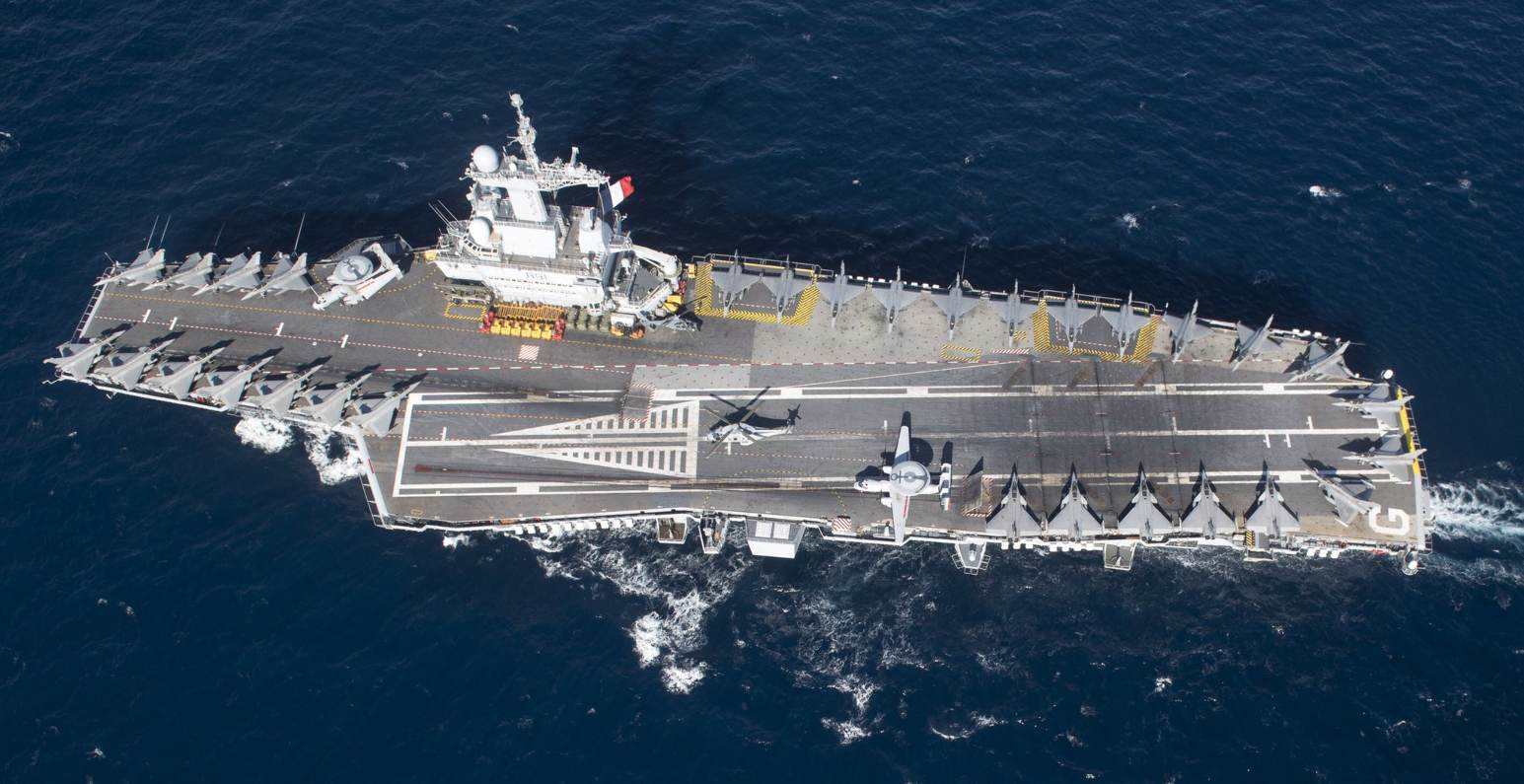
The conventional propulsion systems that can be used in aircraft carriers
There are three classes of conventional propulsion options—(1) oil-fired steam, (2) diesel, and (3) gas turbine. The oil-fired steam option was not considered in this study because of the diminishing presence of such systems on any new Navy designs. Very few ships built in the last 30 years have used oil-fired steam as the prime mover; most surface combatant, amphibious, and auxiliary ships have used either diesel or gas turbine engines. Although steam is fairly efficient at cruise speeds and provides high output power, steam propulsion plants are large and heavy. They also have high manning requirements and provide rather limited endurance.
The diesel and gas turbine systems include (in addition to the basic power plant) ancillary equipment such as cooling, intake, and exhaust subsystems; shock and noise reduction subsystems; and monitoring and control subsystems. Typically, these various subsystems are packaged together by the diesel or turbine manufacturer into a complete “system” that is delivered to the shipyard. The shipyard provides the foundation for the propulsion system plus connects the intake and exhaust subsystems to the ducting built during ship construction. The procedure for a nuclear propulsion system is different: In US NAVSEA contracts for numerous specific components of the nuclear reactor, and these components are delivered to the shipyard, which functions as the propulsion system integrator.
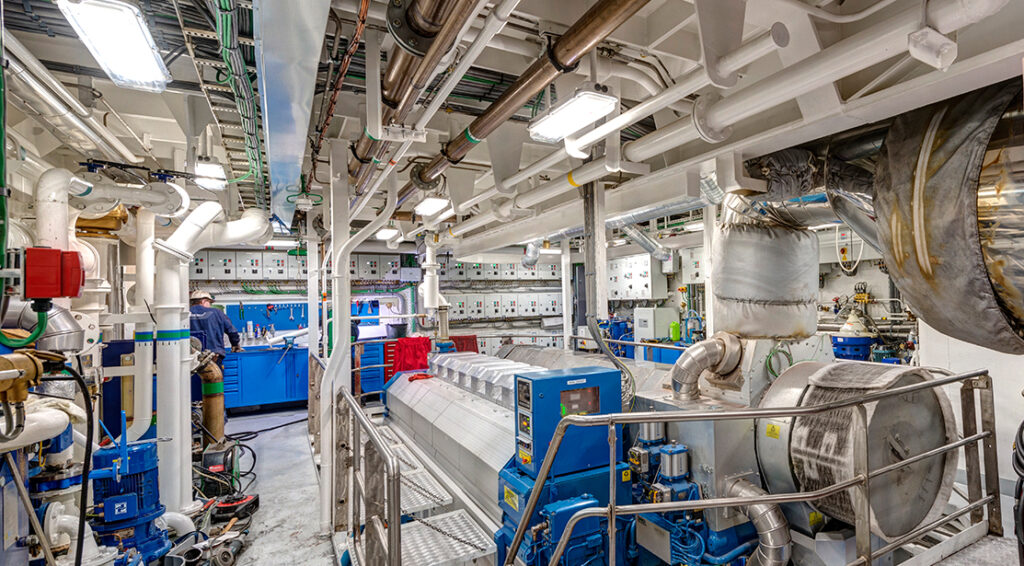
There are three general types of diesel engines—slow speed (less than 200 rpm), medium speed (between 200 and 1,000 rpm), and high speed (greater than 1,000 rpm). Although capable of producing over 70,000 horsepower, slow-speed diesels are very tall, which affects ship configurations, and do not have the engine speed and power characteristics suitable for carrier operations.
High-speed engines do not generate sufficient horsepower to meet the Aircraft Carrier power requirement. Therefore, medium-speed diesels are the candidates for carriers. Medium-speed diesel engines have a sizable presence in the U.S. Navy, primarily on amphibious and auxiliary ships, in addition to being widely used by commercial ships. Diesel engines have a number of advantages and disadvantages compared with other prime mover options for carriers. They are highly fuel-efficient at almost all power loads and can use lower-cost fuels. They also permit lower manning than that required for current steam or nuclear systems. However, they generate higher pollution levels than most other types of engines.
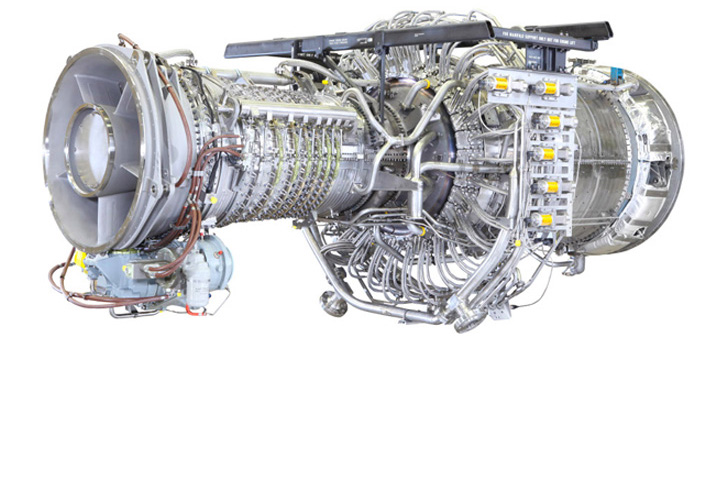
Most surface combatants built in the last 20 years for U.S. and foreign navies have used gas turbines for propulsion. Gas turbine engines traditionally have been developed for aircraft and later modified for stationary and marine use. Smaller industrial and marine gas turbines are derivatives of military engines, but larger versions that would be appropriate for the aircraft carriers are derivatives of commercial airline engines. For example, the GE LM2500 engine that is used on the U.S. Navy’s DDG-51 class of surface combatants is a derivative of the GE CF-6 used on the DC-10 and C-5 aircraft. Similarly, the LM6000 is a descendant of the CF6-80C2 used on the Boeing 747 aircraft.
Nuclear Propulsion
Nuclear propulsion is propulsion of a ship or submarine with heat provided by a nuclear reactor. The power plant heats water to produce steam for a turbine used to turn the ship’s propeller through a gearbox or through an electric generator and motor. Naval nuclear propulsion is used specifically within naval warships such as supercarriers. The United States and France have built nuclear aircraft carriers. The sole French nuclear aircraft carrier example is Charles de Gaulle, commissioned in 2001. The US vessels include the Nimitz and successor Gerald R. Ford classes.
Essentially, nuclear powered aircraft carriers are most desirable for catapult launch systems rather than ramps. The main advantages of nuclear are:
- Extra power to increase speed.
- Steam for catapults.
- Increased range.
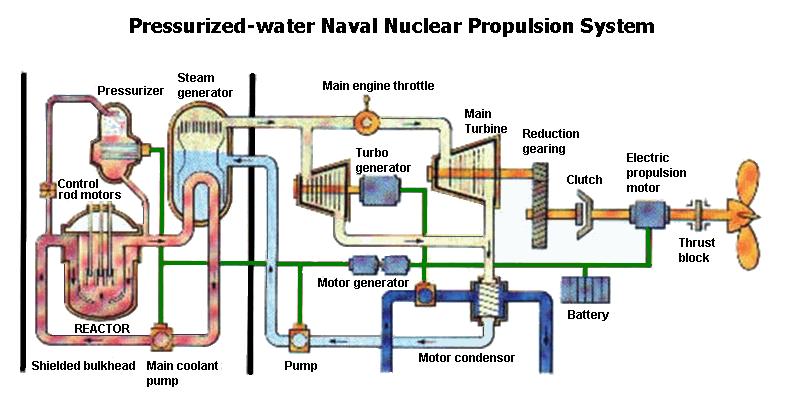
The Cost of Nuclear Propulsion
Initial cost and disposal costs are much higher for a nuclear-powered ship. The savings are made by lower operating costs over a 50 year projected lifetime. The savings are incremental, and you don’t break even until year 15 or so. Meanwhile, you have to put the costs upfront, and then there is the cost of breaking the ship after its life is over (you could sell a conventionally powered one, but not a nuclear ship). So, generally, most nations only consider nuclear power if they have a nuclear industry to support, the industrial capacity to support, and a training track that is already producing nuclear machinists.
Cost of running it – lots of extra crew required to run a nuclear power plant. Long-term running costs are higher than build costs for ships like this.
The Disadvantages of Nuclear Propulsion
- Numerous countries will not permit a nuclear-powered vessel to enter their territorial waters.
- Aircraft carriers only carry a month’s worth of aviation fuel, including the US and French nuclear beasts, so need to be refueled monthly anyway. Taking on diesel at the same time, from a tanker, is feasible. This negates the so-called “unlimited range” that nuclear power is supposed to provide and means that nuclear power provides no real-world operational advantage.
- A reactor adds 280% to the lifetime costs of a ship.
- Unless the whole fleet is similarly powered, the carrier will be traveling no faster or skipping the tanker stops the oil burners require.
- A reactor requires specialist personnel, and facilities, that are expensive to acquire and maintain. While diesel generators and turbines require just a good motor mechanic.
- It’s harder to resell a nuke-powered design/vessel, than a conventional one, so impacts the book value of an asset.
- Nuclear-powered aircraft carriers can be out of action for months when refueling and have no operational advantage over conventional power. It takes almost 2 years to refuel a nuclear carrier and costs billions.
- And finally, when in dock reactors have to be shut down for safety reasons and can take 18 – 24 hours to start up. Diesel takes 5 mins to start
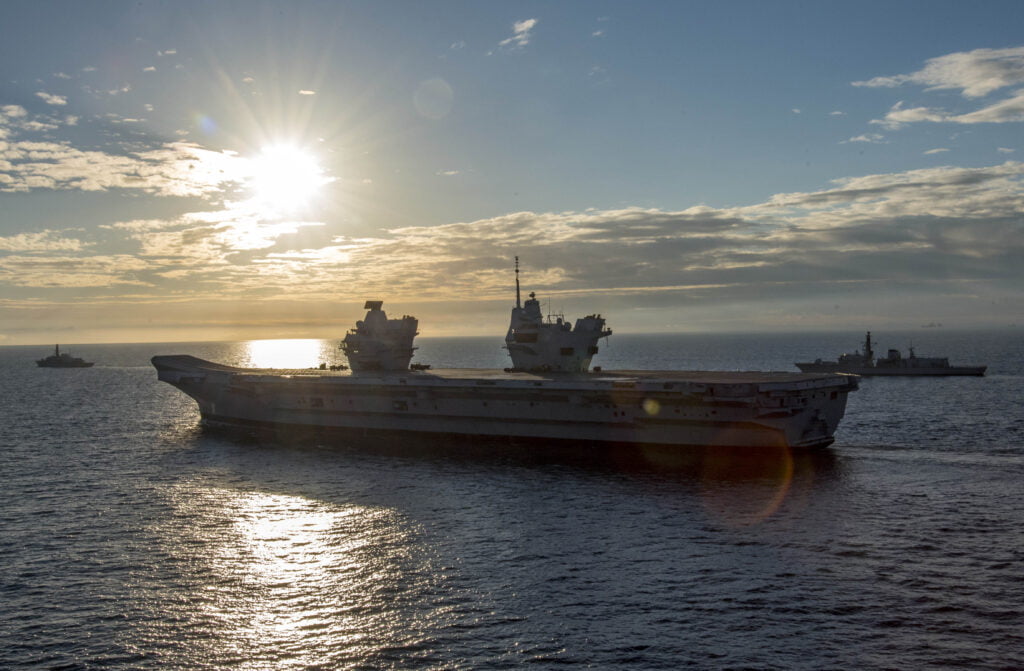
Comparison of Conventional and Nuclear Propulsion Systems
| TYPE | ADVANTAGES | DISADVANTAGES |
| Oil-Fired Steam | • Fuel-efficient at cruise speed • High output power | • Large, heavy plant • High manning requirements • Corrosive exhaust gas |
| Gas Turbine | • Light-weight, compact • Fast startup, response | • Limited output power • Large air intakes/exhausts • Low efficiency at partial power • High infrared signature • Corrosive exhaust gas |
| Diesel, Medium Speed | • Fuel-efficient at all loads • Low fuel costs | • Limited output power • Corrosive exhaust gas • High pollution |
| Nuclear Steam | • Endurance • No air intakes/exhausts • High output power | • High initial cost • Disposal following overhaul, retirement |
Check out Naval Library App to find out the specifications of all aircraft carriers.



